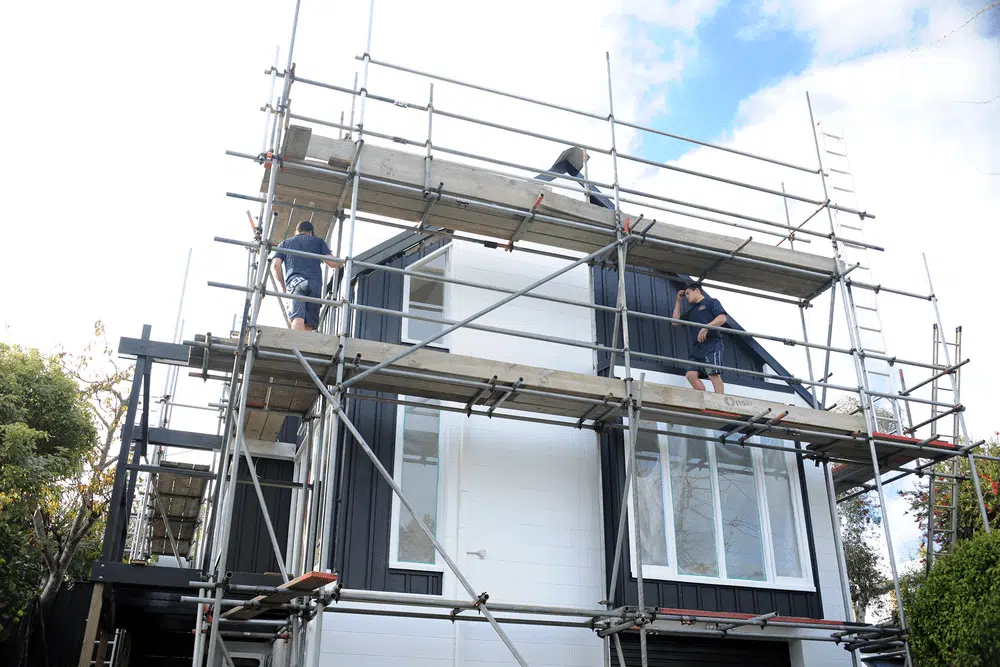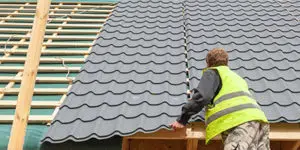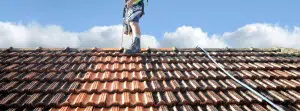Roof Painting & Recoating – Commercial & Residential
Maintaining the colour and paint of your roof will protect it and minimise the need for future repairs – saving you big bucks in the long run!
Protecting the exterior appearance isn’t always the easiest though and that’s why here at Auckland Roofcraft we take care of it for you.
Using only the highest quality materials and paints, our experienced team will provide a comprehensive service including carrying out any necessary repairs and restoration prior to painting.
Using a carefully crafted formula, our re-coating service utilises moss/mould inhibitors, UV absorbers and other preventative measures to protect the wellbeing of your property’s roof.
Generally a three step process, our re-coating service includes a roof repair and clean prior to coating.

FAQs & Info
Aside from our four main services, we also offer the following advice, information and answers about the different types of roofing and how we can help.
IRON ROOF
HOW OFTEN SHOULD I MOSS TREAT MY ROOF? WHY?
Effect of moss, mould and lichen on iron roofs.
The roots of moss, mould and lichen slowly erode through the paint surface of the iron until the roots are sitting on bare iron, which rapidly rusts. This treatment prolongs the life of roofs by many years and needs to be repeated every 2 years.
WHAT ARE BLEEDING NAILS?
There is a tendency for an iron roof to lift each time the wind blows over it (vacuum forms underneath). As time progresses this constant lifting effect forces the nails up and the roof becomes loose; the constant pumping effect of the iron running up and down on the nails causes the roof to leak – the term is bleeding nails. The iron needs to be made secure but you cannot just hammer down the nails that are sticking up they will just come out again; they need to be replaced with a larger nail, in this case your 60mm nail with a smooth surface would be replaced with a 75mm nail with a twist thread. This nails are also a little fatter, so even in the old hole, the grip is tight.
CONCRETE AND TERRA COTTA ROOFS
HOW OFTEN SHOULD I MOSS TREAT MY ROOF? WHY?
We recommend that all roofs are given a KilWell moss, mould and lichen chemical treatment every 2 years.
- Effect of moss, mould and lichen on concrete roofs
If moss, mould and lichen are allowed to establish themselves on concrete tile roofs, the roots burrow through the paint coating, initially stripping away the paint. Once the paint has gone the tile is porous which allows the moss etc. to establish itself even more. The roots now continuously dig into the surface of the tile, loosening particles of concrete, in effect the surface is constantly being worn off and the tile becomes thinner and more porous. The additional weight of the water in each tile adds considerably more weight to the supports, which have a tendency to buckle. This movement breaks tiles and mortar on the hip and ridge caps. Some tiles can carry their own weight in water.
- Effect of moss, mould and lichen on terra cotta roofs
If moss, mould and lichen are allowed to establish themselves on terra cotta tile roofs, the roots burrow through the hardened surface, initially stripping away this surface. Once the hardened outer surface has gone, the inner tile is considerably more porous and softer, which allows the moss etc. to establish itself even more. The roots now continuously dig into the surface of the tile, loosening particles of terra cotta, in effect the surface is constantly being worn off and the tile becomes thinner and more porous. The additional weight of the water in each tile adds considerably more weight to the supports, which have a tendency to buckle. This movement breaks tiles and mortar on the hip and ridge caps. Some tiles can carry their own weight in water.
WHY IS MY ROOF STRESSING?
The problem with the roof is that the tile coating has deteriorated; leaving porous tiles, the extra weight when wet causes movement and this movement damages the mortar and tiles. Whilst we can do the repairs (i.e. re-lay displaced tiles, replace broken tiles, re-mortar hips and ridges) this will not have got rid of any of the movement, so the new mortar on the hips and ridges will simply crack and break again and new tiles will also break. The only thing that stops the movement is re-coating the tile so that the water, when it is raining, runs over the top of this new surface, instead of sinking into the tile. Some porous tiles can carry their own weight in water so for every ton of tiles there maybe a ton in water (most roofs carry several tons of tile). The water evaporating after each rain produces a very damp house; mould readily grows on the ceiling. The extra weight of the water in the tile causes the support wood to buckle, and eventually the roof permanently takes on a buckled shape.
PRESSED METAL (DECRAMASTIC) TILE
WHY ARE TILES ON MY PRESSED METAL (DECRAMASTIC) TILE DENTED?
Some of the tiles on a decramastic roof can be dented due to past foot traffic, which will cause more problems in the future. When they are dented the ends of the tiles generally lift from the tiles next to them. The gap should be less than 5 millimetres or the water funnels in when the wind is blowing in the right direction. Also water puddles in the centre of the tile and the water stays there long after it has rained and creates a rust patch. We can make tiles watertight by bending the tiles out so that water will not puddle in the centre, the two ends will meet and we can then paint as per our procedure.
GUTTER SYSTEMS
WHAT SORT OF GUTTERING GUARD WORKS BEST?
We use two different gutter guard systems at Auckland Roofcraft. The hedgehog guttering system and the aluminium mesh work on the same principle as all guttering systems, namely that the leaves that generally fall into the gutter end up on the bristles of the hedgehog system or on the wire mesh, where the majority of it is blown away, whereas gutters normally act as a trap for leaves, which normally get stuck in the residue of water left after a rain. Once there, they tend to mulch down, staying wet long after the rain has passed. More leaves falling down on top of this mulch tend to get stuck and the gutter fills rapidly. The advantage, mainly with the hedgehog system, is that it is very easy to clean.
Contact Details
Mobile: 0800 766 327
Email: enquiries@aucklandroofcraft.co.nz
Address: 67L Elizabeth Knox Place, St Johns








